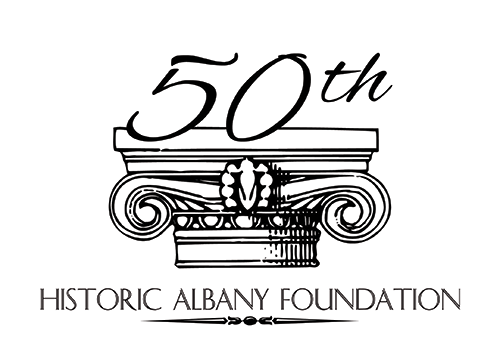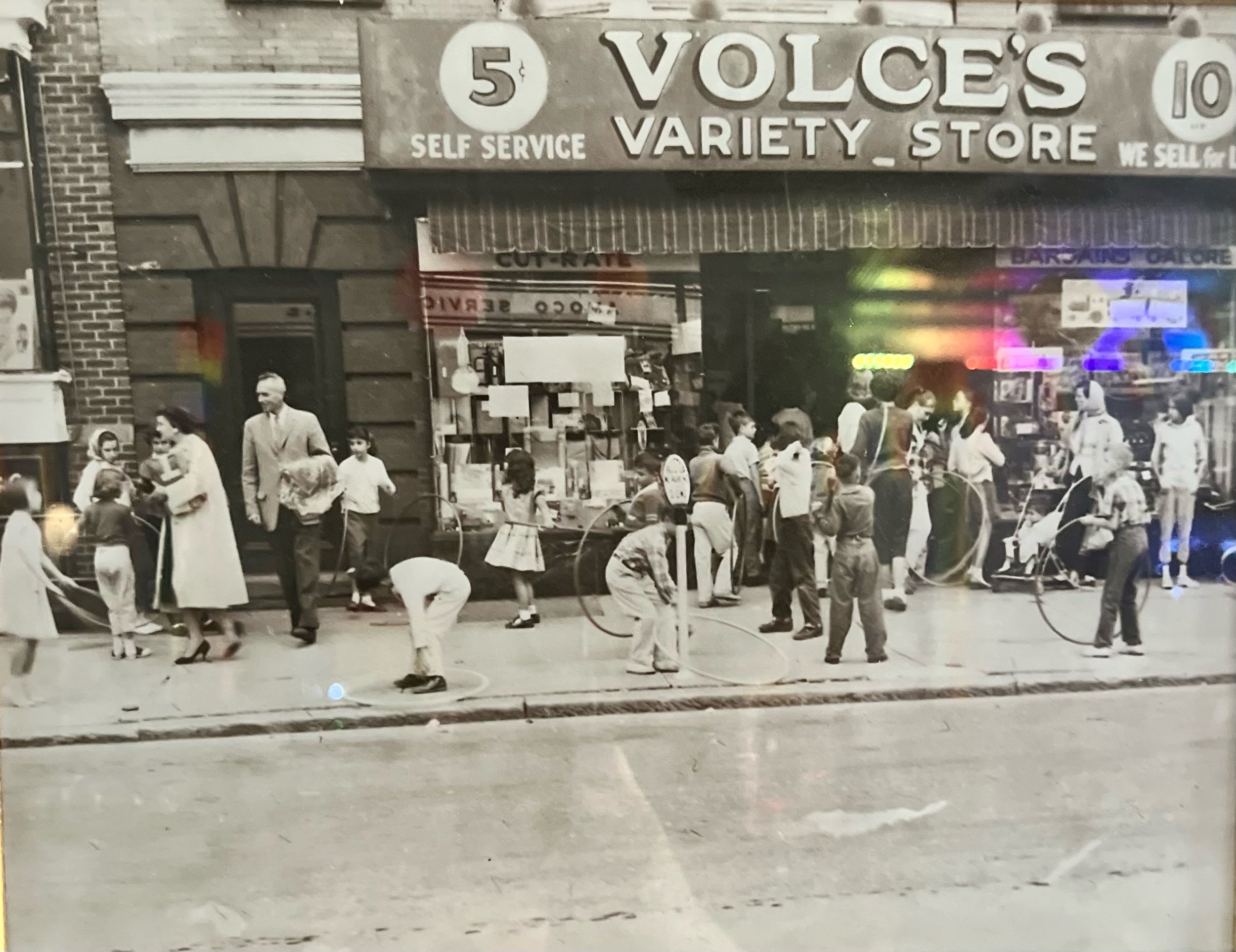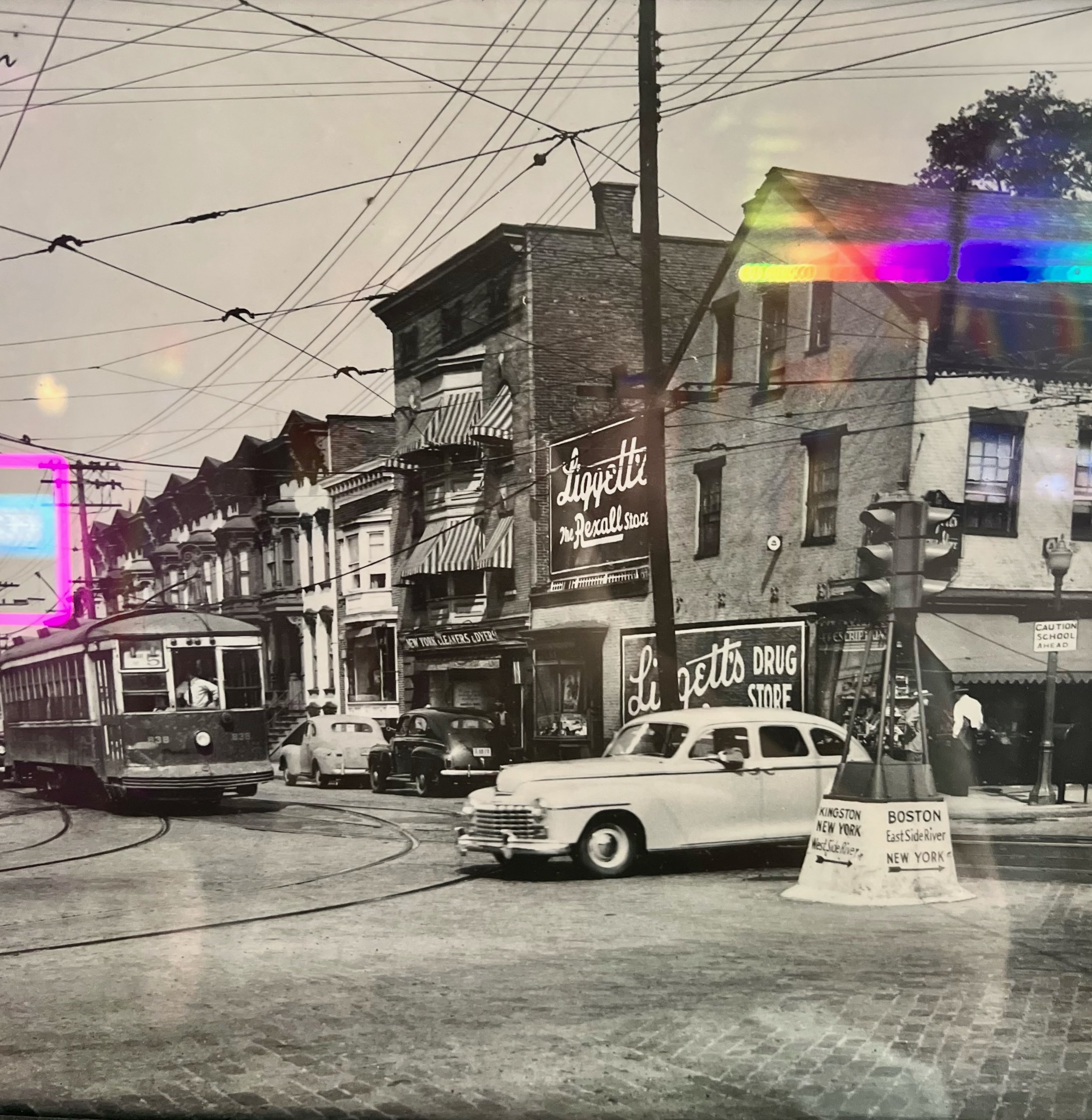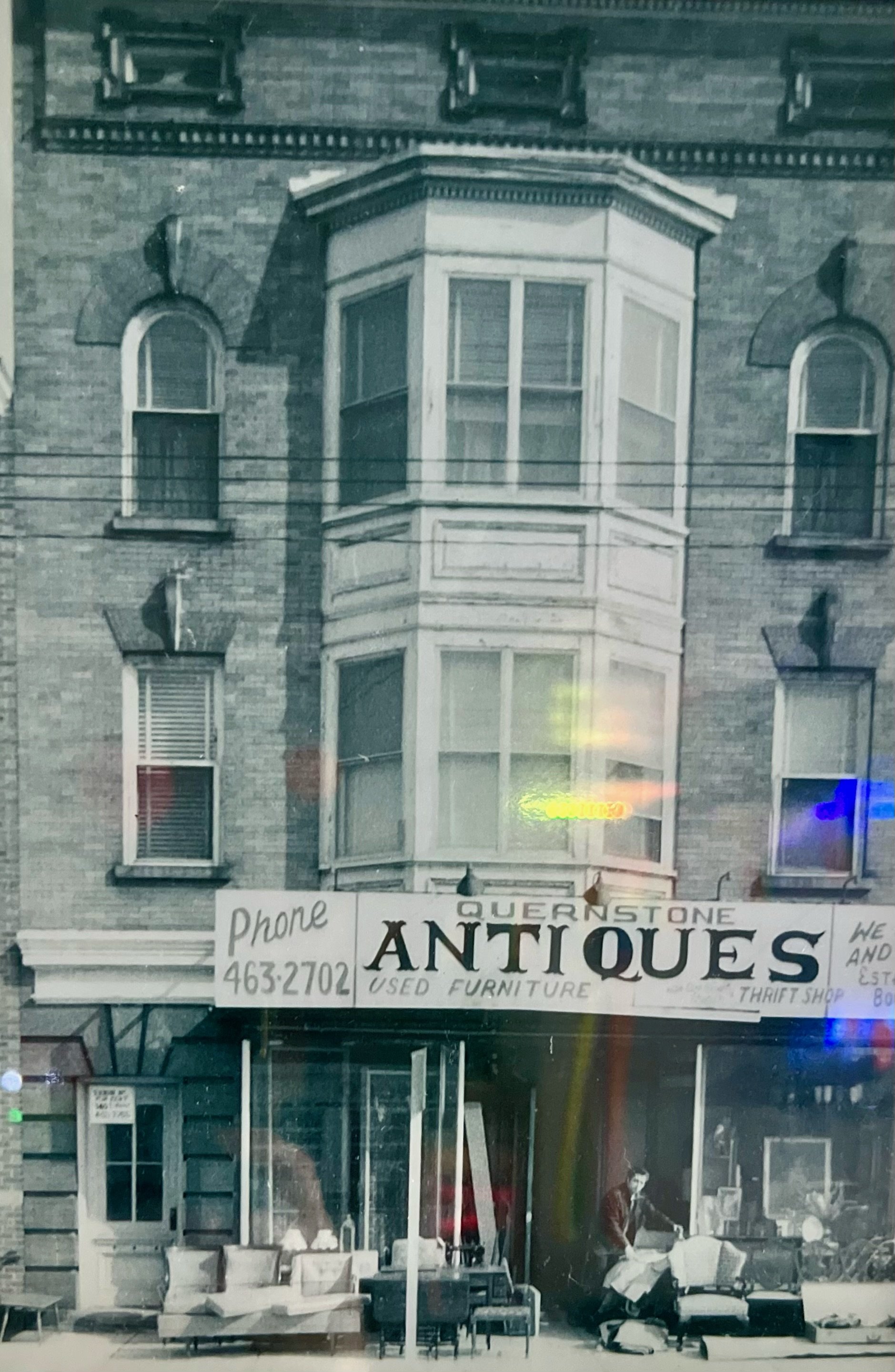Keep up to date with Historic Albany Foundation
#WhereinAlbany 304 Lark Street, Center Square-Hudson Park Historic District
/This week’s #WhereinAlbany post is located on the recognizable historic strip, Lark Street, where both commercial and residential structures line the busy road. Lark Street’s historical importance is indisputable and it makes up a significant portion of the Center Square-Hudson Park Historic District. The building of focus, 304 Lark Street, has emulated this trend, being home to businesses and Albany residents alike. Today, the building is home to Oh Bar, one of the most well-known Gay bars in downtown Albany. As Pride Month continues, it is important to commemorate the struggles and accomplishments of the LGBTQ community, both distant and local.
304 Lark was constructed in 1897 near the Southern end of the street, capping off the set of row houses just before the corner of Madison Avenue. During the turn of the century, the city built many similar Italianate-style row houses, giving the street a denser, ‘Manhattan-like’ atmosphere. Like many of the other structures on the Street, 304 Lark is mixed-use with a commercial storefront on the ground floor and apartments above.
As early as 1898, 304 Lark was home to merchants eligible to issue trading stamps for the Albany Trading Stamp Company. Popular in the early 20th Century, trading stamps were small paper stamps given by merchants, similar to a modern-day loyalty card.
By 1919, the merchant Louis Wise opened a business in the building after years of traveling throughout Albany and Schoharie (at least according to his newspaper blurb below). Wise was very prominent in local advertisements throughout the years (you can see all 12 of Mr. Wises’s advertisements here).
Taken by fred mckinney Nov 18, 1986 - provided by times union archive
“Since 1993 Oh Bar has served as Lark Streets safe and welcoming neighborhood bar for the LGBT community and anyone else who needs a space filled with compassion and community. Over 30 years the diversity and scope of that community has grown and strengthened and we hope to serve Lark St and the City of Albany residents for decades to come”
Throughout the twentieth century, a series of businesses quickly cycled through the building. In the span of just three decades (1960 to 1991) 304 Lark was occupied by seven separate businesses. These include: Volce’s Variety Store (1960-1969), Quernstone Antiques (?-1978), Timbuktu Imports (1979-1981), Sweet Appetit Candy Shop (1983), Pasta Express (1985-86), Prima Vera Restr. (1988), and Gihooly’s Restr & Lounge (1991). By 1992 however, 304 Lark’s commercial space became abandoned. In light of this vacancy, Oh Bar opened.
At first, the bar lacked proper advertising, possibly due to the stigmatization of the Gay community which followed the HIV/AIDS Epidemic. After the lamented closure of the State Street Pub, another Gay bar close by, Oh Bar gained significant popularity. By the mid-1990s, Oh Bar became a prominent location in Albany’s downtown nightlife, even more so for the local LGBTQ+ community.
Lark Street and the surrounding neighborhood have long served as an important location for the LGBTQ+ population in the Capital Region. In a 1999 newspaper, 247 Lark Street was shown as being part of Housing Works and providing accommodation for unhoused persons living with HIV and AIDS. The building still serves as an advocacy office for the organization. The Pride Center of the Capital Region, the oldest operating LGBTQ community center in the country, is located just off Lark Street on Hudson Ave. The Street is also home to IIOV which is located at 245 Lark Street (see our blog about this organization here).
To this day, Oh Bar continues to be an integral part of Lark Street and the Capital Region’s LGBTQ+ community. It is open every day from 2 pm and offers a variety of nightly events, drinks specials, and a shaded patio to enjoy.
By Liam Kelley
““If you’re Gay, Straight, Questioning, or otherwise, as long as you’re awesome, we welcome you to come check out OH Bar!!””
Above photos courtesy of Oh Bar
304 lark inventory sheet (1) - provided by cultural resource information system
304 lark inventory sheet (2) - provided by cultural resource information system
Louis wise’s blurb Mar 4, 1921 - altamont enterprise (image provided by guilderland public library)
Oh bar advertisement Nov 1, 1995 - capital neighbors (image provided by albany public library)
Cultural Resource Information System
Center Square-Central Park Historic District
Albany City Directories, 1960-1992
Waite, Diana S. Albany Architecture. New York: Mount Ida Press, 1993.
#WhereinAlbany 385-389 State Street, Center Square-Hudson Park Historic District
/Located in the Center Square-Hudson Park Historic District, 385-389 State Street is a particularly salient structure amongst the street’s red brick rowhouses. The building was constructed between 1896 and 1897 by notable Albany architect Marcus T. Reynolds, who received the commission from his family. Reynolds was only twenty-eight years old at the time and was looking to help further his fledgling career. The project did just that, and 385-389 State Street set a high-quality precedent for many of his future works. The building consists of three houses, all of which were ostensibly for his cousins, William Bayard and Dr. Howard van Rensselaer (as well as their mother, Laura). However, following the structure’s completion, 387 was sold to Frances Hyuck, whose family were the owners of the Hyuck Felt Mills, 389 was then sold to banker Samuel S. Bullions. Only 385 was ultimately inhabited by William Bayard van Rensselaer as well as his wife, Louisa.
Architecture
Reynolds designed the buildings after spending one and a half years in Europe. As you can see in the images, the architectural style was heavily influenced by his excursion, with the structure mimicking that of a Venetian Palazzo (based upon Italian palaces). The first floor’s exterior features a unique masonry pattern made from terra cotta, alternating between an interesting fish scale and vermiculated (worm-like pattern) design. For the second floor, Reynolds chose to add arched windows with red stone pillars down the center. Looking up to the top of the building in the frieze, you can see a flaming-basket pattern which was taken from the Van Rensselaer coat of arms. The rest of the building wall was constructed using common masonry techniques.
The interior of the building has also undergone significant changes. Shortly after moving in, William Bayard van Rensselaer and his wife brought in decorative details from the Van Rensselaer Manor House, which had recently been deconstructed. For many years, the building was used as a girls' dormitory for SUNY Albany. That is until the 1970s, when the structure was turned into apartments. The building remains a residential space to this day.
By Liam Kelly
Links to building inventory sheets: 385, 387, 389
Waite, Diana S. Albany Architecture. New York: Mount Ida Press, 1993.
Newspaper Article: Old Albany house goes modern
STATEMENT REGARDING DEMOLITIONS OF 125, 127, 129, AND 133 HENRY JOHNSON BLVD
/Historic Albany Foundation is saddened to hear of the loss of four historic properties in the Arbor Hill neighborhood this past Saturday, June 10th. 125, 127, and 129 Henry Johnson Blvd. were all built circa 1850 while 133 was a bit later (circa 1885.) At the time of their construction, the boulevard went by a different name, Knox Street. All four structures were a part of Breathing Lights in 2016 which was a multi-city art installation to highlight vacant and abandoned buildings.
The Albany Community Development Agency (ACDA), run by the City of Albany, owned all four buildings and unfortunately was not able to do anything with them in their years of ownership. Due to the buildings being owned by the city, the Buildings & Codes Department is not allowed to inspect any of them without the authorization of the city. That authorization was granted this past Saturday when they were alerted that those buildings were unsecured and squatters had been residing in them. Upon their arrival, they deemed none of the buildings to be safe to enter and were at high risk of collapse. Years of negligence will do that to any 170-year-old home regardless of its location. We will continue to encourage ACDA and the city of Albany to take better care of the buildings that are in their possession. Proper building ownership and civic pride should be a staple that stretches across all city-owned buildings and not just City Hall.
Despite this most recent emergency demolition, overall the numbers are down from multiple buildings being lost each week to a new average of three to four buildings per month. Historic Albany Foundation has worked tirelessly with Albany Mayor Kathy Sheehan, her administration, and the Buildings and Codes Department on a regular basis for several years now. The data backs up that our efforts are not in vain. While these numbers are lower, the goal will always be to get to zero.
We would also like to add that Historic Albany Foundation was able to help serve 140 homeowners and contractors in regards to grants, funding and technical services in 2022. That is 140 homes our organization has helped protect for the future in one year alone. For a staff of two full-time and four part-time employees, this is a large undertaking for an organization our size. HAF is proud of our efforts and we thank you for the continued support so we may continue to improve our historic structures within Albany’s communities.
Historic Albany Foundation Board President, Matt Malette












